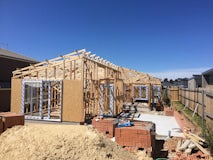When is the housing market due to peak again, the Govt.'s "trifecta" of housing policies, and Westpac lends a whopping $875M in new housing loans in Q4.
Too long; didn't read? Here're this week's TLDRs...
The OCR decision: A Core Logic breakdown
Read the article
The OCR decision: An Infometrics take
Read the article
Housing market’s soft start to the year continues into Feb
Read the article
FHBs are paying less
Read the article
Rents settle in Q4 2023
Read the article
TA: No more rate rises in 2024
Read the article
House prices will return to their peak in Q3 of 2025
Read the article
The Govt.’s "trifecta" of policies to address the housing crisis
Read the article
Westpac lends a net $874.4M in new housing loans Q4 2023
Read the article
Bridging loans are too risky
Read the article
Non-performing housing loan ratio hits a 10-year-high
Read the article
Landlord fined after retaliatory eviction notice was served
Read the article



